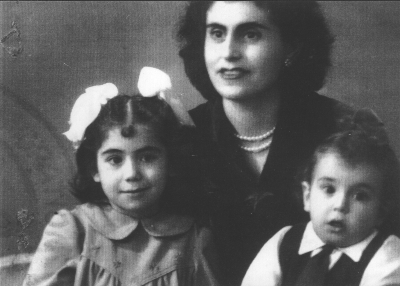Quilt No.925NI - Nia Ikonomou
1940 x 1660mm
The quilt was made in Piraeus, Greece in the early 1960s by a quilt maker whose name is unknown. It was ordered by Nia's aunt, Aspasia Tziotis, and brought to Australia as a wedding gift for Nia and John when they were married in Brisbane in 1966. It is not used now.
"Nia's Paploma
This beautiful 'paploma' (quilt) was brought to Australia by Nia Ikonomou's aunt, Aspasia Tziotis, as a gift for Nia and John when they married in 1966 in Brisbane. It was a wedding gift from Nia's extended Yiannopoulos family. They specially ordered it from a 'paplomatas' (quiltmaker) in Piraeus, the busy port of Athens. They wanted a gift that 'would last, something to remember'. As for so many other Greek Australian families - finding someone to make a traditional Greek-style paploma in 1960's Australia was often quite a task.
When Nia was seven she left Piraeus, to come to Australia with her mother Veneria Xanthopoulos and brother Telemachos (Tim). Two years earlier, in 1951, Nia's father Zisimos (Simo), a shipwright's carpenter, had come to Sydney with the ship he was working on, and then made the decision to settle in Australia. Nia's younger brother Dimitri (Jim) was born here.
Nia has strong memories of the journey to Australia on the P&O ship 'Fairsea', converted from an old cargo ship, a common practice in those post-war years when Australia's immigration population numbers were at their peak. Indeed, Nia recalls that many people on board were headed for the Bonegilla migrant camp, near Albury NSW. But Nia was bound for Sydney where her father met the family and so began the daunting process of settling into a new land, with an unknown language and strange customs. It was particularly difficult for Veneria - she had left behind a large, closeknit family. 'I became Mum's friend, I had to learn English fast, so I could help her'. Nia's experiences are shared by second generation women from non-English-speaking backgrounds, all over Australia.
Considering its age and that it has travelled halfway around the world, Nia's paploma is in pristine condition. It remains as a loving tribute both from the country of her birth, and the country where she and husband John have made a good life for themselves. They have two children, Veneria (Veny) and Nicholas."
[Written by Lula Saunders, adapted from interview 6/9/00 for the National Quilt Register]


Related Quilts:
1960 x 1950mm
2033 x 1474mm
1920 x 1440mm
1050 x 610mm






